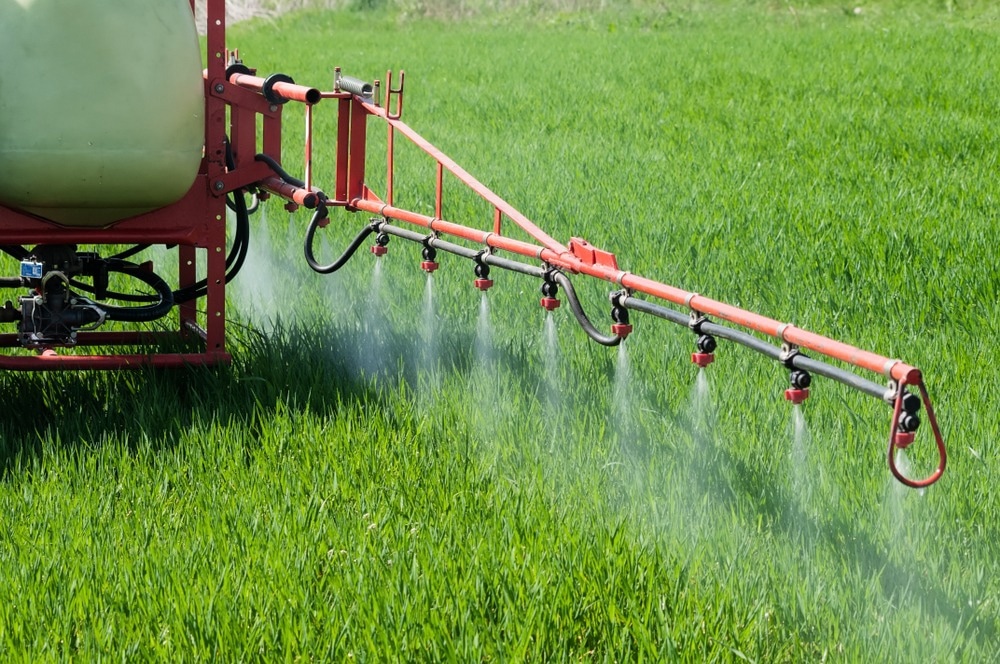Herbicides are chemicals used to manage or control unwanted plants. However, their poor utilization efficiency negatively influences the ecosystem and human welfare. Polymer-related herbicide delivery systems can be an effective solution to resolve this problem.

Study: Biodegradable and Light-Responsive Polymeric Nanoparticles for Environmentally Safe Herbicide Delivery. Image Credit: Robert Avgustin/Shutterstock.com
A recent study published in the journal ACS Applied Materials & Interfaces focuses on this issue by creating biodegradable and light-responsive polymeric nanoparticles under moderate conditions through polyesterification. These polymeric nanoparticles were then utilized to develop an ecologically safe light-triggered herbicide delivery system.
Herbicides: Applications and Harmful Impacts
Herbicide application contributes significantly to pest control and crop production improvement in agriculture. Herbicides are most often used in row-crop production, where they are administered before or during planting to improve crop yield while limiting other vegetation. In forest management, herbicides are employed to prepare harvested areas for replanting.
However, herbicide usage has a detrimental influence on both the climate and human health. The major cause of herbicide cytotoxicity is their poor utilization efficiency caused by leaching, disintegration, and evaporation.
Herbicides can cause malformations in crops by suppressing cell division, decreasing photosynthesis, and imitating natural plant growth hormones. As a result, there is a pressing need to create more efficient and eco-friendly herbicide delivery systems.
Nanotechnology-Based Controlled Release Herbicide Delivery Systems
Several strategies for resolving the issue of unwanted herbicide loss have been reported. For instance, methods that improve herbicide adherence to plant leaves may be used to minimize herbicide loss caused by scattering herbicide particles and rain damage.
In this context, nanotechnology-based solutions have emerged as excellent herbicide delivery techniques for preventing herbicide loss and improving utilization efficiency. Although these technologies successfully address the issue of unwanted herbicide loss, achieving herbicide delivery in a spatially and temporally regulated way remains a major challenge.
Controlled-release herbicide delivery systems, capable of dispensing herbicides on demand and prolonging their application period, have gained significant attention in the last decade. Polymers, inorganic chemicals, and nanoparticles, among other materials, can be employed as herbicide carriers in these innovative herbicide delivery systems.
Polymeric Nanoparticles: The Future of Herbicide Delivery Systems
Polymeric nanoparticles with adaptable chemical and structural characteristics in response to external stimulation are ideal materials for developing herbicide delivery systems. Many controlled-release herbicide delivery systems based on abiotic and biotic impulses, such as light, temperature, pH, and enzymes, have recently been developed.
Light-responsive polymeric nanoparticles are particularly important because light offers a remarkable platform for obtaining distant and spatiotemporal governed herbicide delivery by easily adapting the wavelength, energy, and site of irradiation.
In this context, o-Nitrobenzyl is the most common photolabile group, extensively used to create light-responsive polymeric nanoparticles for herbicide delivery systems.
In terms of ecological preservation and conservation, biodegradability is an important factor in ascertaining the suitability of materials for herbicide delivery applications. Linear polyesters have enormous potential in pharmacological and biochemical applications because of their outstanding chemical stability and cytocompatibility.
Linear polyesters also have the advantages of moderate reaction settings, high resilience to many organic compounds, and high reaction efficiency over traditional polymerization substances.
Highlights and Important Findings of the Study
In this study, the researchers created a light-responsive monomer with a photolabile o-nitrobenzyl group. This monomer was then polyesterified to develop light-responsive bifunctional polymeric nanoparticles.
Proton nuclear magnetic resonance was used to examine the chemical characteristics of the as-prepared polymeric nanoparticles. Arabidopsis thaliana was used as the research subject to explore the herbicidal influence of amphiphilic polymeric nanoparticles.
The researchers chose the herbicide 2,4-dichlorophenoxyaceticacid(2,4-D) as a drug carrier to demonstrate its prospects as a controlled-release herbicide delivery system.
The 2,4-D-loaded polymeric nanoparticles were observed to be stable in the absence of ultra-violet (UV) radiations, while the discharge rate of 2,4-D from the nanoparticles steadily enhanced after UV rays treatment.
The 2,4-D-loaded polymeric nanoparticles exhibited a good herbicidal impact in a pot trial. Lastly, toxicity studies revealed that the as-prepared polymeric nanoparticles reduced the herbicide's toxicity to non-target plants.
Based on these findings, it is safe to suggest that the light-degradable polymeric nanoparticles developed in this study have great potential for future applications in smart herbicide delivery systems.
Reference
Shan, P., et al. (2022). Biodegradable and Light-Responsive Polymeric Nanoparticles for Environmentally Safe Herbicide Delivery. ACS Applied Materials & Interfaces. Available at: https://pubs.acs.org/doi/10.1021/acsami.2c12106
Disclaimer: The views expressed here are those of the author expressed in their private capacity and do not necessarily represent the views of AZoM.com Limited T/A AZoNetwork the owner and operator of this website. This disclaimer forms part of the Terms and conditions of use of this website.